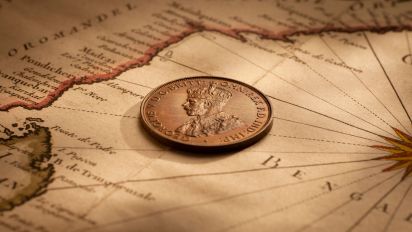Proof 1936 Penny



The rarity of the Proof 1936 Penny.
This Proof 1936 Penny is a Coin of Record. It was struck to proof quality, to put on record the date '1936', satisfying the needs of the mint rather than the wants of collectors.
Coins of Record out of this era are amazingly scarce. Up until its offering in 2002 only three other proof pennies dated 1936 had been sighted.
The exceptional quality of the Proof 1936 Penny.
The auctions instigated the introduction of the term “super proof” into the industry’s numismatic dictionary. One such "super proof", this Proof 1936 Penny.
The industry contends that the exceptional quality of the Proof 1936 Penny, and the other proofs offered at the auction, was a consequence of Farman’s close relationship with Albert Le Souef.
Le Souef was, like Farman, a passionate collector and occupied a position of influence in the Melbourne Mint that would eventually see him become Deputy Mint Master between 1921 and 1926. He maintained his influence in numismatic circles well into the 1930s.
In this era there was nothing untoward, or unethical, with ensuring that a collector friend received the very best proof collector striking.
It was a simple matter of selecting the smoothest copper blanks. And polishing the dies to ensure a crisp and highly detailed striking.
A brilliant state of preservation.
This coin has had only three owners over the last eighty four years. That’s almost as rare as the coin itself. Its state of preservation reflects the minimal number of owners. And that all along the way this coin has been cherished.
The purpose of proof coining.
Respected author, Greg McDonald, provides us with an insight as to why Coins of Record are so limited in numbers when he shared with us a definition put out by the Royal Mint London of a proof coin.
“Struck on a slow-moving coining press using carefully polished dies which are frequently cleaned during use. The materials from which the coins are made are specially processed and the coin blanks are carefully selected and polished before use. Blanks and minted coins are individually handled to prevent accidental damage.
The essential characteristics of proof coins are highly polished fields, fully reproduced designs free from any flaw, and square edges. Milling where present should be regular and free from any defect. Because of the very high standard set in manufacture, such coins are slow to make and relatively expensive to produce.”
The purpose of proof coining ... cont'd.
In the striking of a proof coin, the mint’s intention was to create a single masterpiece, coining perfection.
Perfection in the dies. Wire brushed so that they are razor sharp. Perfection in the design, highly detailed, expertly crafted. Perfection in the fields, achieved by hand selecting unblemished blanks, polished to create a mirror shine. Perfection in the edges to encase the design … exactly what a ‘picture frame does to a canvass’.
A proof is an artistic interpretation of a coin that was intended for circulation. A proof coin is meant to be impactful, have the ‘wow’ factor and exhibit qualities that are clearly visible to the naked eye.
A proof coin was never intended to be used in every-day use, tucked away in a purse. Or popped into a pocket.
Proof coins were struck to be preserved in government archives as a record of Australia’s coining history, time-capsuled for future generations.
Proof coins were also used to showcase a mint’s coining skills, to display at major worldwide Exhibitions or sent to other mint’s and public institutions. A simple case of competitive one-up-man ship. (The British Museum was a major recipient of Australia’s proof coinage. So too the Royal Mint London.)
Proof coins were struck at the discretion of the mint master so there was no hard-fast rule about the regularity of the issues. Or the mintages.
The striking of proofs was very often influenced by the collecting zeal of the Mint Master. And his involvement with the collector market. The more passionate the collecting habits of the Mint Master, the greater the chance of proofs being struck.
© Copyright: Coinworks